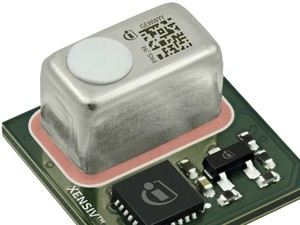Infineon introduces the XENSIV™ PAS CO2 5V sensor for higher energy efficiency and improved air quality in buildings
In order to further drive decarbonization, improving the energy efficiency of buildings is crucial, as they contribute significantly to global energy consumption and carbon emissions. Innovative solutions are needed to optimize energy consumption while ensuring a healthy indoor environment. Infineon Technologies is addressing this need with the introduction of the new XENSIV™ PAS CO2 5V sensor. It is based on the Photoacoustic Spectroscopy (PAS) technology and improves energy efficiency by adapting ventilation to actual occupancy, thereby reducing the carbon footprint of buildings. This makes the device suitable for applications such as heating, ventilation, and air conditioning (HVAC) systems as well as room controller and thermostat units in commercial and residential buildings. It can also be used for IoT and consumer devices such as smart lighting, air purifiers, conferencing systems, and smart speakers, as well as emerging applications such as smart horticulture and smart refrigerators.
The XENSIV PAS CO2 5V provides accurate air quality data in real time. Its miniaturized form factor of 14x13.8x7.5 mm³ is identical to the size of the XENSIV PAS CO2 12V sensor and allows seamless integration into a wide range of applications. This makes it easy to adopt dual designs or maintain the same design strategy for both product variants. Compared to the 12V sensor, the 5V version comes with a 5V power supply which further simplifies installation. Moreover, it offers a significantly faster response time of 55 seconds, down from 90 seconds (12 V). This improvement enhances efficiency across various applications, allowing for quicker data acquisition and more responsive performance in dynamic environments. The sensor's design is dust-proof in accordance with ISO 20653:2013-02, which extends the lifetime of the device in dusty environments and minimizes maintenance requirements. In addition, the UART, I²C and PWM interfaces enable seamless integration with microcontrollers and other digital systems, simplifying the design and development process (more info).





